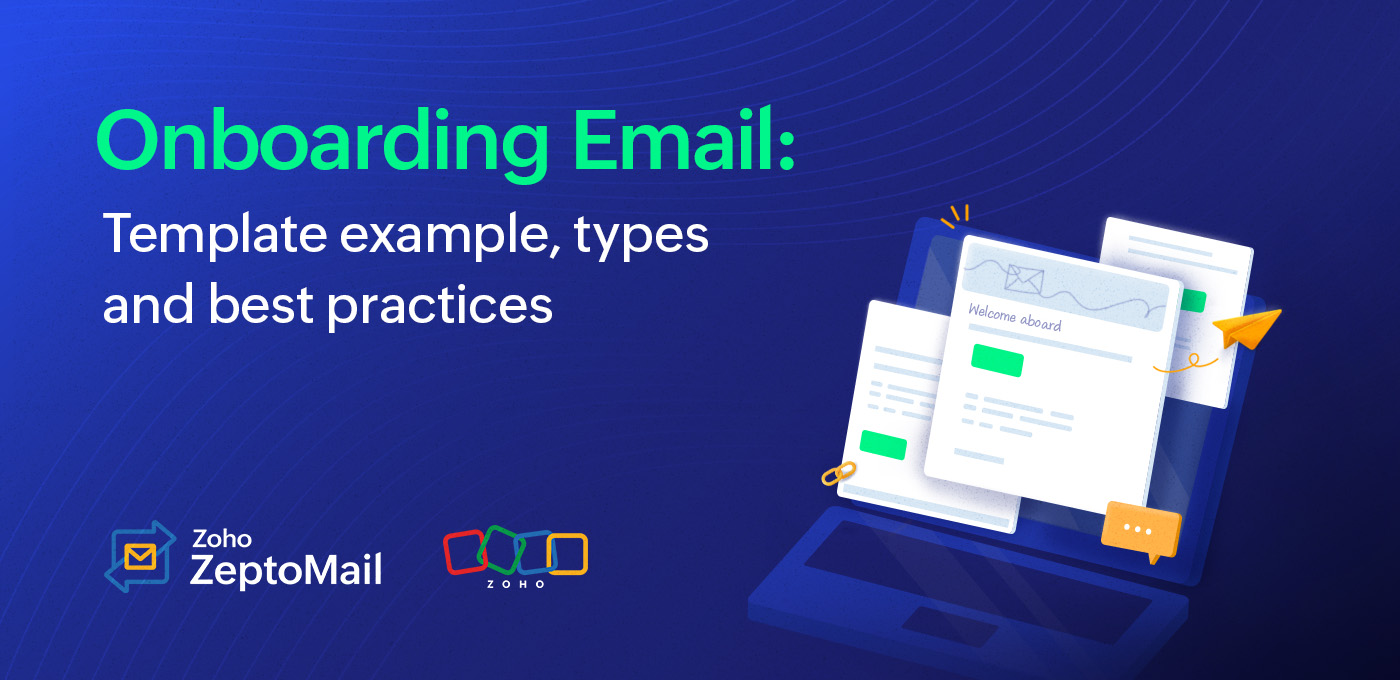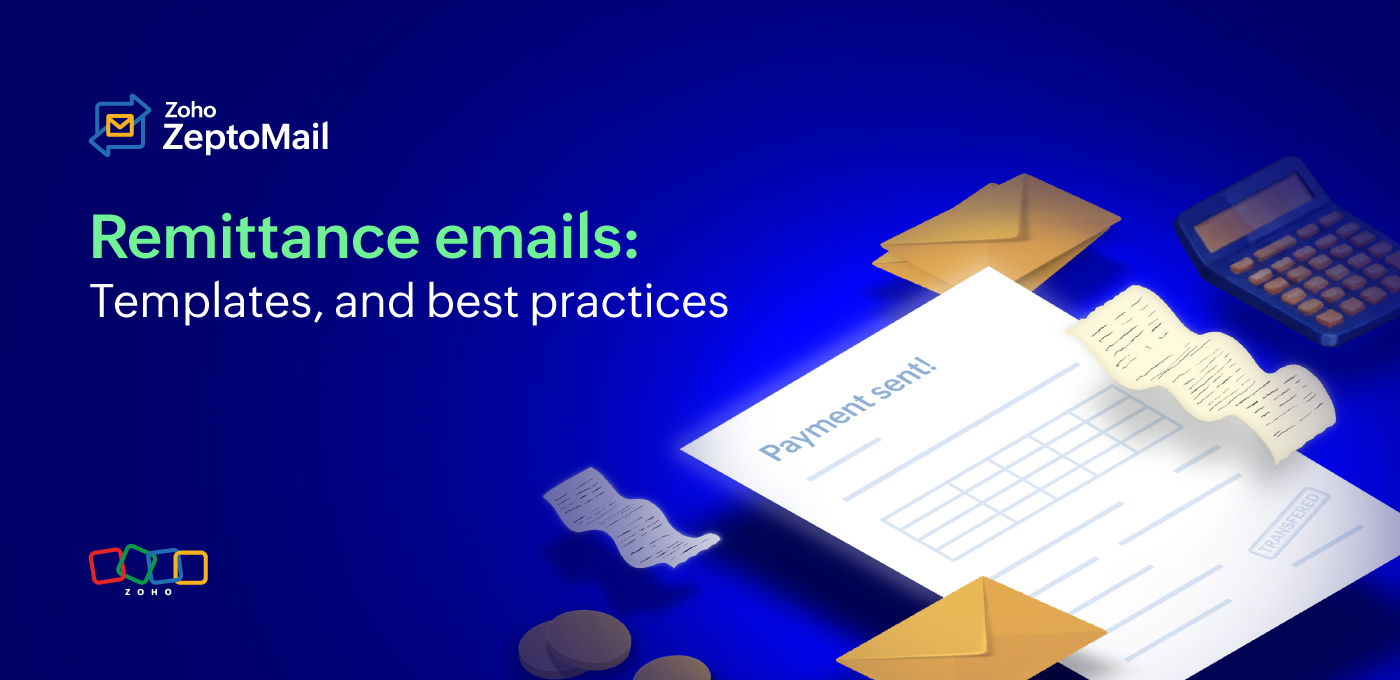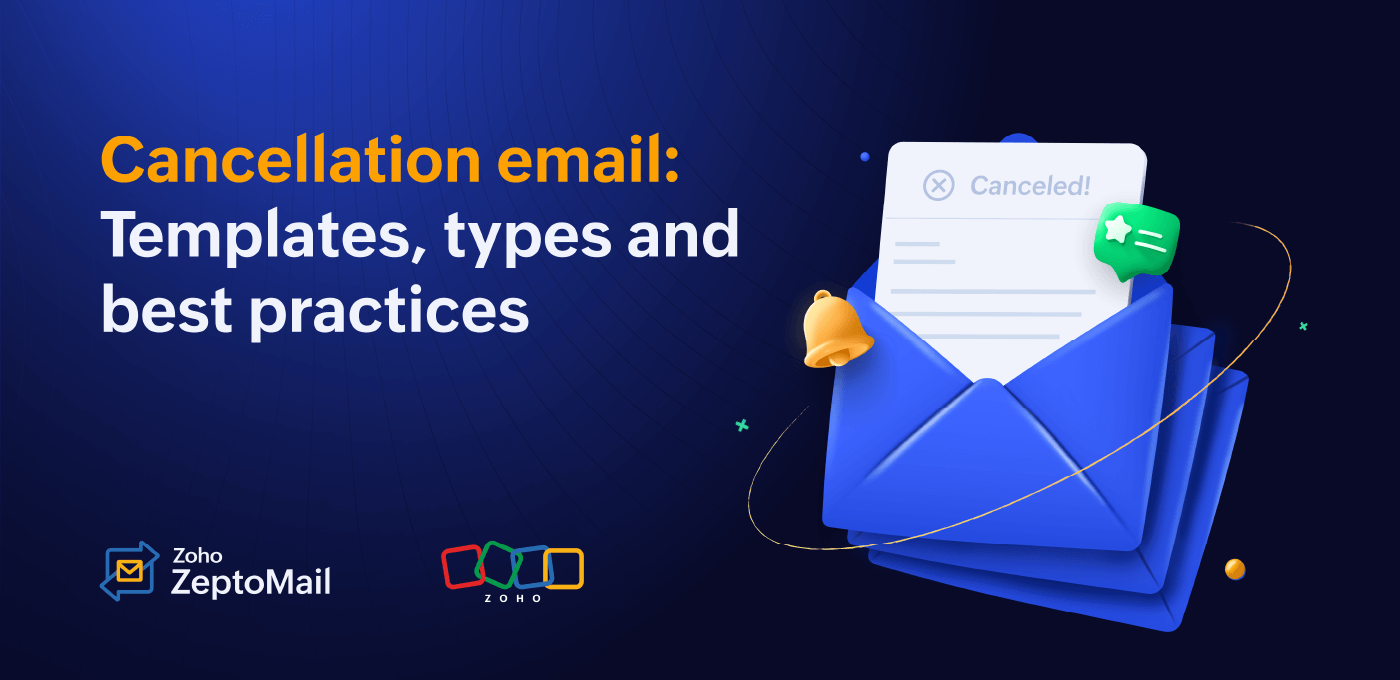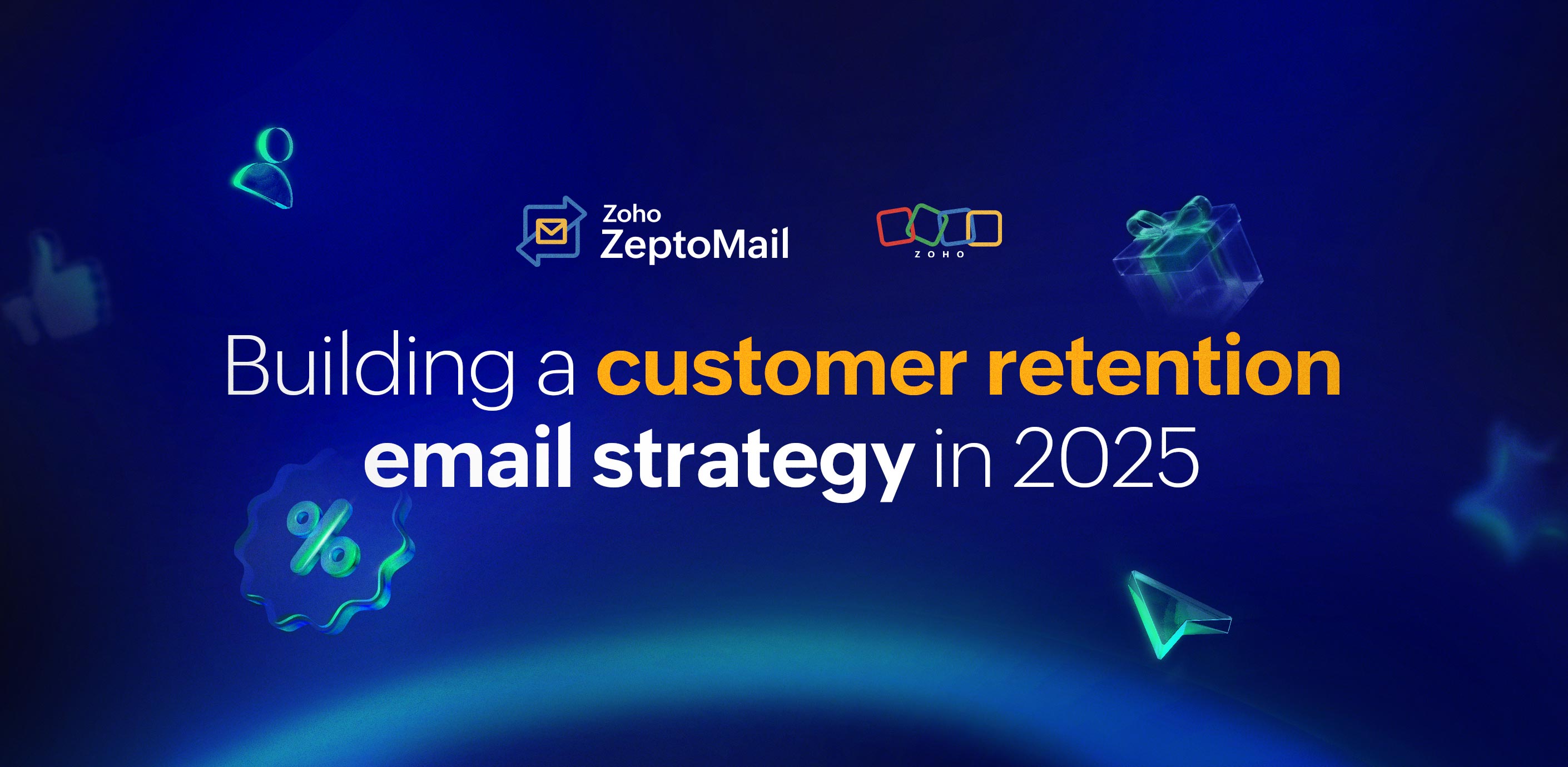- HOME
- More
- Best Practices
- Onboarding emails: Template example, types, and best practices for 2025
Onboarding emails: Template example, types, and best practices for 2025
- Published : September 30, 2025
- Last Updated : September 30, 2025
- 210 Views
- 11 Min Read
Think about the first time you walk into a new cafe. If the barista greets you warmly, helps you pick a drink, and shows you the Wi-Fi password, it instantly feels welcoming, right? That’s exactly what onboarding emails do for your business.
They’re not just “welcome notes.” They’re your chance to guide new users, make them feel at home, and show them why sticking around with your product or service is worth it. From a simple hello to feature walk-throughs, onboarding emails set the tone for your customer’s journey.
In this guide, we’ll break down everything you need to know about onboarding emails in 2025. We'll delve into the types, best practices, and ready-to-use template content so you can create emails that don’t just land in inboxes but actually leave a lasting impression.

What is an onboarding email?
An onboarding email is a type of transactional email sent to new customers or users after they sign up, with the purpose of helping them get started and learn how to use a product or service effectively. They’re usually instructional, action-oriented, and focused on educating and helping new users to go about the process.
The primary purpose of these emails is to welcome the individual, provide essential information, and guide them toward a successful and lasting relationship with the product, service, or organization.
Instead of being a single message, onboarding emails are often part of a series that guides users step by step, like setting up their profile, exploring features, or taking actions that lead to long-term engagement.
How is an onboarding email different from a welcome email?
Now you may be wondering, how is a welcome email different from an onboarding email? Are they not the same? It's easy to confuse onboarding emails with welcome emails because both are sent at the start of a customer’s journey. But they play very different roles, as seen below.
Aspect | Onboarding email | Welcome email |
Purpose | To educate, guide, and help the user successfully use the product/service. | To greet and thank the user for signing up, and make a great first impression. |
Tone | Informative, supportive, sometimes step-by-step. “Here’s how you can make the most of being here." | Friendly, warm, brand-introduction focused. “We’re glad you’re here!” |
Timing | Sent after the welcome email, often as a sequence of emails over days/weeks. | Sent immediately after sign-up or first interaction. |
Content | Tutorials, setup guides, feature highlights, and tips to achieve quick wins. | Brand story, a thank-you message, and maybe a quick offer or link. |
Goal | Drive user adoption, retention, and add long-term value. | Build trust towards the brand and create excitement. |
The importance of onboarding emails
1. Create first impressions and lasting connections
Think about the first time you walk into an event, unsure of where to sit. Then someone greets you warmly and guides you with a smile. It instantly sets the tone for the entire experience.
Onboarding emails work the same way. They’re your virtual hosts, assuring and guiding customers from the very start. It’s your chance to say, “Hey, we’re excited to have you!” These emails set the tone for your relationship, making customers feel welcomed and valued from day one. A strong start sparks curiosity and keeps them eager to explore more of what you offer.
2. Help customers get started smoothly
Nothing’s more frustrating than signing up for a product and not knowing what to do next. Onboarding emails act like a friendly guide, walking customers through the essentials. Whether it’s showing how to set up their account step by step, explore key features, or find helpful resources, these emails make the journey easy and stress-free.
3. Hook them and hold them from the start
Early engagement is key to long-term success. When customers receive helpful onboarding emails, they’re more likely to interact with your product or service. This engagement not only builds familiarity but also reduces the chances of them abandoning your product before truly experiencing its value.
4. Build trust and credibility
Consistency matters. When you show up in your customer’s inbox with clear, valuable, and friendly guidance, it builds trust. Onboarding emails signal that your business is reliable, cares about its users, and is committed to helping them succeed. Trust at this stage can translate into loyal customers down the line.
5. Open doors for feedback and growth
Onboarding emails aren’t just about guiding customers, they’re also a subtle way to introduce more value. Once your users are comfortable, you can highlight additional features, upgrades, or related products. Also, these emails can be a gentle way to ask for feedback, helping you refine your offerings while keeping customers engaged.
Types of onboarding emails
Think of onboarding emails as your brand’s first handshake with a new customer. But just like in real life, not every handshake is the same—some are quick and friendly, others are detailed and informative. Broadly, onboarding emails could be like:
Getting started emails: This is the classic “Hey, we’re glad you’re here!” message. It sets the tone, introduces your brand, and often includes a quick tip or a link to get started.
Product tour emails: These guide users through your product step by step, highlighting key features so they don’t feel lost.
Educational emails: For more complex products, these emails break down usage tips, tutorials, or best practices to help users get the most out of your offering.
Engagement emails: These nudge users to take action, like completing their profile, trying a feature, or exploring a premium option.
Feedback emails: Sometimes, early feedback can help you tweak your onboarding or product experience. Asking politely can make users feel valued.
Each type has a role, but together, they ensure your customers start their journey confidently.
12 best practices for crafting onboarding emails
Onboarding emails are crucial for any business, but they can backfire if they're not done right. Here are some best practices to follow while crafting your onboarding emails.
1. Keep your emails simple and sweet
Nobody wants to read a novel in their first email from your business. Keep it concise, clear, and focused on the essentials that help users get started quickly. Short paragraphs, bullet points, and plain language make your emails easy to scan and more enjoyable to read.
2. Keep it friendly and approachable
Think of your onboarding emails as a warm welcome from a helpful friend. Use a friendly, conversational tone that’s easy to read and approachable. Skip the jargon and corporate stiffness—let your brand personality shine. A cheerful, human voice makes users feel comfortable, engaged, and excited to explore what you have to offer.
3. Don't overwhelm, break emails down into series
Don’t overwhelm users with all of the information at once. Spread your onboarding emails out as a thoughtful series—welcome them right after signup, give them a product tour the next day, and share tips a few days later. Smart timing keeps users engaged without feeling bombarded.
4. Add a personal touch to your emails
Use the user’s name, reference their recent actions, and suggest features that could help them. Personalization makes users feel seen and appreciated, turning a simple email into a warm, human connection.
5. Make an impression before they even open the email
Your subject line is the first thing users see—think of it as the smile that invites them in. Friendly, approachable subject lines grab attention, spark curiosity, and make users excited to open your email. Avoid being too formal or "salesy"! Instead, write like you’re chatting with a friend.
Tips for friendly subject lines:
Use their name: “Hey {{Name}}, ready to explore?”
Keep it casual: “Let’s get you started!” or “Your first step is just here!”
Add a sprinkle of fun or emojis: A little personality goes a long way in making your email stand out. "Your dashboard is waiting… and so is the fun! 😎"
Be clear but inviting: Users should know what the email is about, without feeling like it’s a lecture. "Welcome aboard, {{Name}}! Let’s get started 🎉 "
Remember, a friendly subject line sets the tone for the entire onboarding experience—so make it warm, welcoming, and impossible to ignore!
6. Make it worth their while
Add value with tips, quick tutorials, or helpful links. Your goal is to make users feel supported, confident, and excited about using your product or service. A little helpful guidance can go a long way in building trust.
Also, sprinkle in a few short customer stories or testimonial videos. They’re a great way to engage users and show them that your product really works, helping their business grow with confidence!
7. Include a clear CTA that guides
Guide users toward the next step with simple, action-oriented CTAs like “Get Started,” “Explore More,” or “Set Up Your Account.” Think about what users would want to do immediately after signing up and make it easy for them to take action.
8. Branding is key
Every onboarding email should scream “this is us!” in a subtle, professional way. Use your business email, incorporate your brand colors, fonts, and tone consistently, and make sure your logo is visible.
9. Add social handles to your emails
Including your social media handles, website links, and contact information in onboarding reinforces your brand identity, builds authority, and makes it easy for users to connect with you. Think of every email as a mini brand ambassador landing in your user’s inbox, guiding them not just through your product, but also toward your wider online presence. It’s a simple way to stay top of mind and invite engagement beyond the inbox.
10. Don’t forget email deliverability
All of the effort in the world won’t matter if your emails never reach users’ inboxes. Use a reliable email service like Zoho ZeptoMail, authenticate your domain (DKIM, DMARC), avoid spammy words, and regularly monitor bounces. Good deliverability ensures that your carefully crafted emails actually get seen—and that’s half the battle.
11. Optimize emails for mobile
Most people check emails on their phones these days, so your onboarding emails need to look great on screens of all sizes. Make sure your design is responsive, fonts are easy to read, images load quickly, and buttons are tappable. A mobile-friendly email prevents frustration and ensures that users can engage with your content wherever they are—whether commuting, waiting in line, or sipping coffee.
12. Add BIMI to build trust
BIMI (Brand Indicators for Message Identification) lets your brand logo appear next to your email in the inbox. It’s a small touch with a big impact. Users immediately recognize your brand, feel more confident opening your emails, and trust that the message is legitimate. Including BIMI in onboarding emails boosts both brand visibility and credibility right from the start.
Onboarding email template examples
As mentioned earlier, it’s always a smart idea to break your onboarding emails into a series and space them out over time. Ideally, leave three to four days between each email to give users enough time to explore without feeling overwhelmed.
1. The first onboarding email helps users get started
This series can be sent right after your welcome email. Its purpose is simple: Guide users to get started with your product or service smoothly and hassle-free. Think of it as a friendly hand holding them through the first steps, helping them feel confident and ready to explore everything your business has to offer.
Subject line ideas:
Welcome to {{Product Name}}, {{Name}}!🎉
Hey {{Name}}, we’re glad you’re here!
Let’s get started with {{Product Name}} 🚀
Body of the email:
Hi {{Name}},
On behalf of the entire team, welcome to {{Your Product Name}}! We’re thrilled to have you on board! 🎉
To help you get started, here’s a quick guide to setting up your dashboard👇
CTA button: {{Get Started}}
Note: Need a hand? Our support team is always ready to help. Just reach out to {{Support Email}}, and we’ll guide you through every step.
To help you hit the ground running, here are a few things you can do right away:
Take a quick tour: {{Link to a short video tutorial or product tour}}
Set up your profile: {{Link to profile settings}}
Invite your team: {{Link to team invitation page}}
We can’t wait to see what you achieve with {{Product Name}}. Let’s make your first experience amazing with us!
Cheers,
Team {{Service/Product Name}}
2. The second onboarding email highlights the key features
A few days after your first “get started” email, it’s time to show users the real value of your product. This series focuses on key features or tools that make their experience easier, faster, or more enjoyable. Include short tutorials, quick tips, or links to product tours so users can see how your product solves their problems.
Pro tip: Use visuals like screenshots or short videos. They grab attention and make learning fun!
Subject line ideas:
“Discover the best features of {{Product Name}} 🚀”
“Unlock the full power of {{Product Name}}, {{Name}}!”
“Here’s how {{Product Name}} can make your life easier ✨”
Body of the email:
Hi {{Name}},
We hope you’re settling in well! Now that you’ve had a chance to explore the basics, it’s time to show you some key features that can make your experience faster, easier, and more enjoyable.
Here’s a quick look at what you can do with {{Product Name}}:
Feature A:
{{A screenshot of the feature, a short description, and a link to a tutorial or demo}}
Feature B:
{{A screenshot of the feature, a short description, and a link to a tutorial or demo}}
Feature C:
{{A screenshot of the feature, a short description, and a link to a tutorial or demo}}
By using these features, you’ll be able to save time, increase your productivity, and engage more users. Ready to dive in? Click below to start exploring these features today:
CTA Button: {{Explore Features}}
Note: If you have any questions, our support team is happy to help: {{Support Email}}
Happy exploring,
Team{{Product Name}}
3. The third onboarding email encourage engagement.
Once users are familiar with the basics, your next goal is to nudge them to take action. This could be completing their profile, trying an advanced feature, or exploring a premium option.This series helps users feel involved and ensures that they get the most out of your product.
Subject line ideas:
“You’re almost there, {{Name}}! Take the next step ✨”
“Don’t miss out on {{Product Name}}’s full potential 🚀”
“Ready to unlock more features, {{Name}}?”
Body of the email:
Hi {{Name}},
We hope you're doing well. By now, you’ve explored the basics of {{Product Name}}! Good job! 🎉
Now it’s time to take things to the next level and get the most out of your experience. Here are a few ways to make your journey even better:
Complete your profile: Personalize your account to unlock tailored tips and features.
{{CTA Button: Complete Your Profile }}Try an advanced feature: Explore tools designed to save time and improve results.
{{CTA Button: Try Now}}Invite your team: It's time to invite your team and take your productivity to the next level.
{{Link to team invitation page}}Explore premium options: Check out premium features that can make your work simpler and more hassle-free.
{{CTA Button: Upgrade to Pro}}Need a hand or have questions? Our support team is here to guide you: {{Support Email}}
Let’s make your experience with {{Product Name}} even more amazing!
Thank you,
{{Product Name}} Team
4. An optional fourth onboarding email gathers feedback
After users have spent some time with your product, send a gentle feedback email. Ask them what they love, what they’re struggling with, and what could make their experience better. Users feel valued when their opinions are heard, and your team gains insights to improve the onboarding process.
Subject line ideas:
“Got a minute, {{Name}}? We’d love your feedback 💬”
“Help us make {{Product Name}} even better!”
“Your thoughts matter to us, {{Name}}! 📝”
Body of the email:
Hi {{Name}},
We hope you’ve been enjoying your journey with {{Product Name}} so far! 🌟
Your experience matters to us, and we’d love to hear your thoughts. What do you love? What’s been tricky? And what could make {{Product Name}} even better for you?
Sharing your feedback only takes a minute, but it helps us improve and ensures we deliver the best experience possible.
CTA Button: {{Share Your Thoughts}}
As a thank you, your insights will help us shape future updates and make {{Product Name}} more valuable for you and everyone in our community.
Thank you for helping us grow together!
Warm regards,
Team {{Product Name}}
Wrapping up
It's time to make your onboarding emails fun. Remember, onboarding emails aren’t just messages, they’re your first handshake with a new user. The way you guide and engage them can set the tone for the entire customer experience.
By following the templates, examples, and best practices we’ve shared, you can create an onboarding experience that not only informs but also delights your users. So go ahead and make your onboarding emails helpful, fun, and memorable, and watch your users fall in love with your product from day one!


